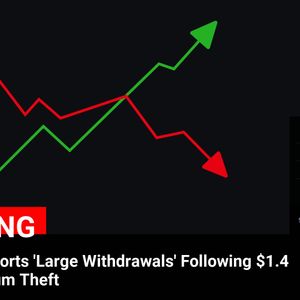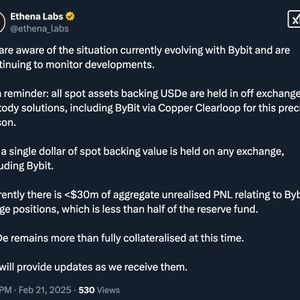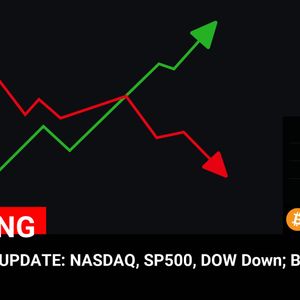Cryptocurrency traders, are you watching the forex markets? Macroeconomic events like central bank decisions can ripple across all markets, including crypto. The Australian Dollar (AUD) is currently under pressure as the market anticipates a potential interest rate cut by the Reserve Bank of Australia (RBA). Let’s dive into what’s driving this and what it could mean for the Aussie Dollar and potentially broader market sentiment. Australian Dollar Wobbles on RBA Interest Rate Cut Expectations The Australian Dollar is currently experiencing headwinds, pausing its recent gains against the US Dollar. This shift in momentum comes as traders are increasingly pricing in an expected interest rate cut by the Reserve Bank of Australia (RBA) at their upcoming policy meeting on Tuesday. The central bank is widely anticipated to reduce its Official Cash Rate by 25 basis points, bringing it down to 4.10%. This potential move marks the first rate cut in four years and reflects concerns about the Australian economy and inflation. Here’s a breakdown of the key factors influencing the Australian Dollar and the RBA’s potential decision: Anticipated RBA Rate Cut: Financial markets are largely expecting the RBA to announce a 0.25% interest rate cut, signaling a shift towards a more dovish monetary policy. Easing Inflation: Recent economic data from Australia indicates a moderation in inflation. December’s Consumer Price Index (CPI) and the RBA’s preferred Trimmed Mean CPI both showed signs of slowing price pressures, fueling expectations for a rate cut. Global Economic Factors: Developments in the US, including President Trump’s tariff policies and weaker-than-expected retail sales, are also playing a role. These factors have, at times, weakened the US Dollar, offering some support to the Australian Dollar, but the overarching expectation of an RBA rate cut is dominating market sentiment. US Dollar Strength Resurgence: The US Dollar is regaining some strength, supported by improved US Treasury yields. This renewed strength in the USD is adding further downward pressure on the Australian Dollar (AUD/USD pair). US Dollar Gains Momentum as Treasury Yields Climb The US Dollar Index (DXY), a measure of the USD’s strength against a basket of major currencies, is showing signs of recovery. This is partly attributed to rising yields on US Treasury bonds. The increase in yields makes dollar-denominated assets more attractive to investors, thus boosting the US Dollar. Key factors supporting the US Dollar’s recent strength include: Improved Treasury Yields: Yields on 2-year and 10-year US Treasury bonds have risen, reflecting investor confidence and potentially influencing capital flows towards the USD. Federal Reserve Stance: Despite some weaker economic data, comments from Federal Reserve officials like Michelle Bowman and Christopher Waller suggest a cautious approach to interest rate cuts. They emphasize the need for more confirmation that inflation is sustainably under control before considering easing monetary policy. Strong US Job Market: Fed Chair Jerome Powell has highlighted the strength of the US job market and solid economic growth as reasons why the Fed doesn’t need to rush into interest rate cuts. Will the RBA Buck the Trend? Inflation Still a Concern While the market largely anticipates an interest rate cut, the RBA faces a delicate balancing act. Trimmed mean inflation, the RBA’s preferred measure, remains above the target range of 2%-3%. This sticky inflation could lead policymakers to adopt a more cautious approach, even as they consider easing monetary policy to support economic growth. The RBA’s dilemma can be summarized as: Inflation Target vs. Economic Growth: The RBA’s primary mandate is to maintain price stability (inflation within 2-3%). However, they also aim to support full employment and economic prosperity. Cutting interest rates could stimulate growth but might risk further fueling inflation. Cautious Stance Possible: Given that trimmed mean inflation is still above the target range, the RBA may signal a cautious approach even if they proceed with a rate cut. This could involve carefully worded statements about future policy direction. Data-Dependent Decisions: Like the Federal Reserve, the RBA is likely to emphasize that future interest rate decisions will be data-dependent. This means they will closely monitor economic indicators, particularly inflation and employment data, before making further moves. Australian Dollar Technical Outlook: Key Levels to Watch From a technical analysis perspective, the AUD/USD pair is currently trading around 0.6340. Let’s examine the key technical levels for the Australian Dollar: AUD/USD Key Technical Levels: Ascending Channel: The pair is trending upwards within an ascending channel, indicating an underlying bullish bias. Relative Strength Index (RSI): The 14-day RSI is above 50, further supporting a bullish outlook, although momentum might be waning as price consolidates. Resistance Levels: Upper boundary of ascending channel: 0.6390 Psychological resistance: 0.6400 Support Levels: 9-day EMA: 0.6316 14-day EMA: 0.6300 Lower boundary of ascending channel: 0.6280 Australian Dollar Performance Against Major Currencies Today: The table below illustrates the percentage change of the Australian Dollar against other major currencies today. Notably, the Australian Dollar is weakest against the US Dollar. USD EUR GBP JPY CAD AUD NZD CHF USD 0.18% 0.20% 0.24% 0.13% 0.29% 0.39% 0.12% EUR -0.18% 0.03% 0.05% -0.05% 0.11% 0.21% -0.06% GBP -0.20% -0.03% 0.06% -0.07% 0.09% 0.19% -0.08% JPY -0.24% -0.05% -0.06% -0.09% 0.06% 0.15% -0.11% CAD -0.13% 0.05% 0.07% 0.09% 0.16% 0.26% -0.01% AUD -0.29% -0.11% -0.09% -0.06% -0.16% 0.10% -0.18% NZD -0.39% -0.21% -0.19% -0.15% -0.26% -0.10% -0.27% CHF -0.12% 0.06% 0.08% 0.11% 0.00% 0.18% 0.27% *Heatmap showing percentage changes of major currencies against each other. Base currency from left column, quote from top row. Decoding the RBA: Your Quick Guide to Understanding its Impact Want to understand how the Reserve Bank of Australia (RBA) influences the Australian Dollar? Here are some frequently asked questions and concise answers: RBA FAQs: What is the Reserve Bank of Australia and how does it influence the Australian Dollar? The RBA is Australia’s central bank, responsible for setting interest rates and managing monetary policy. Higher interest rates generally strengthen the Australian Dollar, and vice versa. How does inflation data impact the value of the Australian Dollar? Moderately higher inflation can lead to interest rate hikes by the RBA, attracting foreign investment and increasing demand for the Australian Dollar, thus strengthening it. How does economic data influence the value of the Australian Dollar? Strong economic data can signal a healthy economy, encouraging investment and potentially leading the RBA to raise interest rates, both of which are positive for the Australian Dollar. What is Quantitative Easing (QE) and how does it affect the Australian Dollar? QE involves the RBA injecting liquidity into the economy by purchasing assets. This typically weakens the Australian Dollar. What is Quantitative Tightening (QT) and how does it affect the Australian Dollar? QT is the reverse of QE, where the RBA reduces its balance sheet. This is generally positive for the Australian Dollar. Conclusion: Navigating the Australian Dollar’s Next Move The Australian Dollar is at a crucial juncture as traders brace for a likely RBA interest rate cut. While easing inflation supports the case for lower rates, persistent underlying inflation and global economic uncertainties add complexity to the RBA’s decision-making process. Keep a close watch on the RBA’s policy announcement and Governor Bullock’s statements for clues about future policy direction. For cryptocurrency traders, understanding these macroeconomic factors is vital as they can influence broader market sentiment and risk appetite. To learn more about the latest Forex market trends, explore our article on key developments shaping interest rates and currency valuations.



















